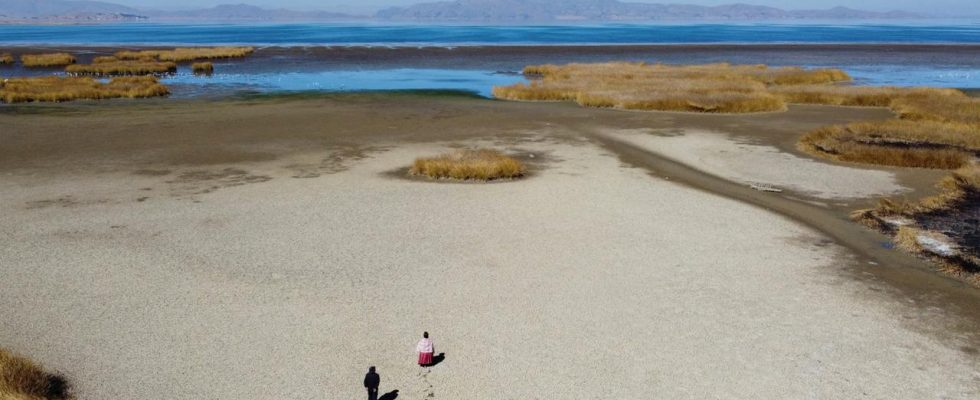Thousands of people between Peru and Bolivia depend on Lake Titicaca – also as a reservoir for drinking water. But the water level has been dropping for weeks. This results in crop losses.
After heat and drought, the water level in South America’s Lake Titicaca is approaching its all-time low of almost 30 years ago. Since April, the lake’s water level has dropped by more than half a meter to 3,808.19 meters above sea level, according to data from the Peruvian Meteorological Service. The lowest level on the Peruvian side so far was measured in December 1996 at 3808.10 meters.
The lack of water due to the low water level has recently caused severe crop losses in the region. The quinoa harvest fell by 90 percent, the radio station RPP reported, citing the Puno Region Chamber of Commerce. Fishing, hunting and tourism are also affected.
Almost a month ago, the level of Lake Titicaca was at historic lows: On August 10, Lucia Walper, head of the forecasting unit of the National Service for Hydrology and Meteorology of Bolivia (Senhami), shows a diagram of the water levels of Lake Titicaca, Bolivia and Peru share.
Lake Titicaca lies between Peru and Bolivia and is the largest freshwater lake in South America with an area of around 8400 square kilometers. Located in the high Andes, it is the highest commercially navigable body of water in the world.
As a drinking water reservoir, the lake is of great importance for the approximately two million people in the region. Because most of the wastewater from the surrounding towns and mines flows untreated into the lake, the water quality drops, however. The environmental protection organization Global Nature Fund named Lake Titicaca – as it did in 2012 threatened lake of the year.

